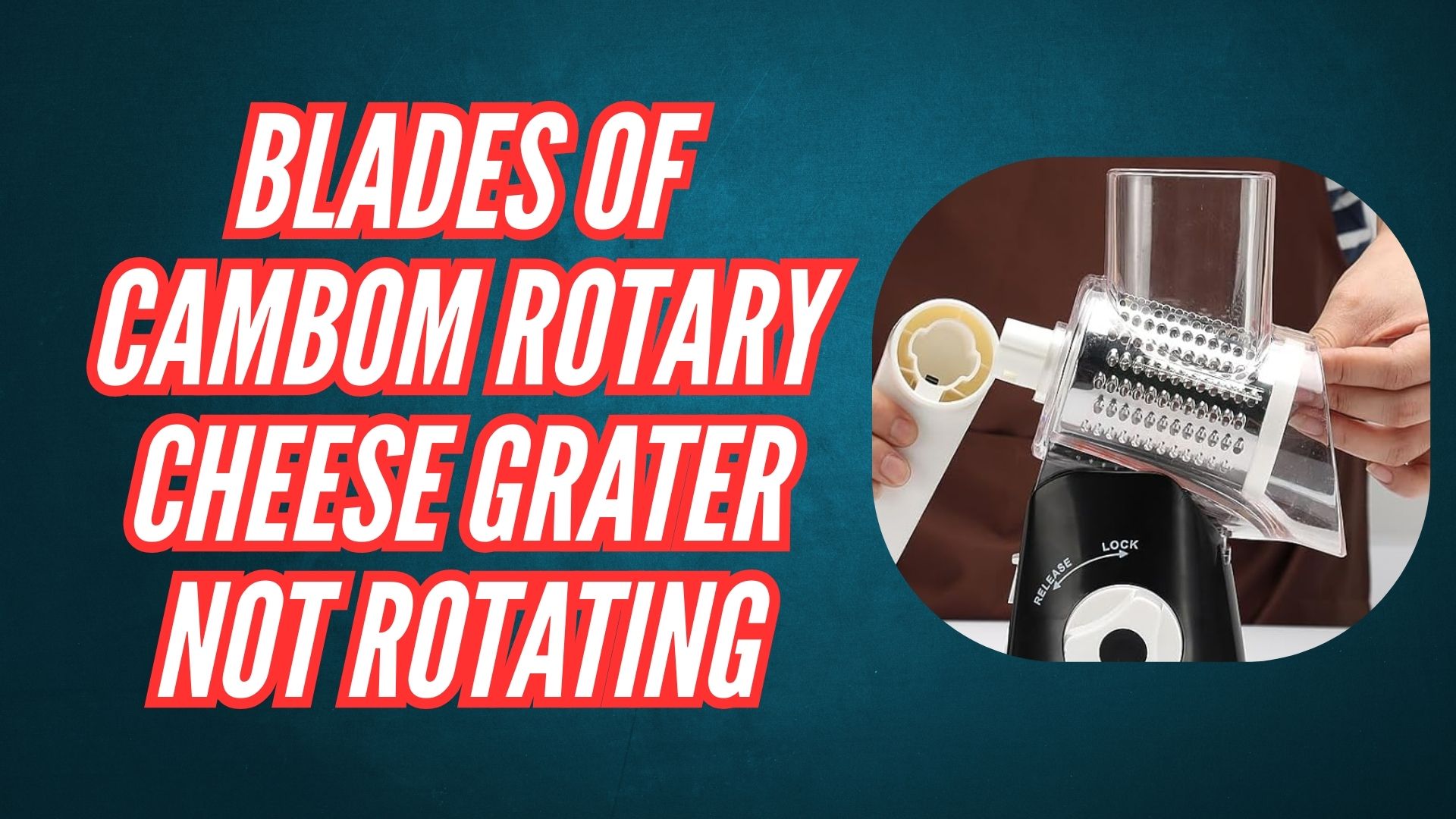The Cambom rotary cheese grater is a must-have kitchen tool, renowned for its efficiency and versatility. However, like any mechanical gadget, it can encounter issues over time. One of the most common complaints users report is that the blades of the grater do not rotate smoothly, which can make grating more challenging and frustrating. This issue often stems from improper maintenance, incorrect assembly, or wear and tear.
In this comprehensive guide, we’ll delve into why this happens, how to fix it, and how to keep your Cambom rotary cheese grater functioning like new for years to come.
Why Does Blade Rotation Matter?
Blade rotation is central to the performance of the Cambom rotary cheese grater. If the blades do not rotate smoothly, it affects the grater’s functionality in several ways:
- Efficiency: Smooth blade rotation ensures quick and consistent grating, saving time and effort.
- Safety: Resistance in blade movement can cause users to apply extra force, increasing the risk of slippage or accidents.
- Product Longevity: Ensuring the blades operate smoothly reduces strain on other components, extending the life of your grater.
- User Satisfaction: A smoothly functioning grater enhances the overall user experience, making food preparation more enjoyable.
Common Reasons for Blade Rotation Issues
1. Food Residue Build-Up
Over time, food particles, especially from soft or sticky foods like cheese or chocolate, can build up inside the grater. This residue can obstruct the blade’s movement.
2. Improper Assembly
If the grater isn’t assembled correctly, the alignment between the blade and handle may be off, causing resistance during operation.
3. Lack of Maintenance
Failure to clean and lubricate the moving parts regularly can lead to stiffness and reduced blade performance.
4. Wear and Tear
With prolonged use, components such as the blade edges, handle, or internal mechanisms can wear out, affecting smooth operation.
5. Foreign Objects
Small pieces of hard food or debris can get lodged in the blade mechanism, preventing smooth rotation.
6. Manufacturing Defects
While rare, defects in the blade or handle mechanism from the manufacturing process could also contribute to rotation issues.
Step-by-Step Solutions for Fixing Blade Rotation Issues
1. Disassemble the Grater
- Carefully take apart the grater, including the handle, blade, and barrel.
- Refer to the user manual for proper disassembly instructions to avoid damaging the components.
2. Clean Thoroughly
- Rinse Immediately After Use: Prevent residue build-up by rinsing the grater under warm water after every use.
- Deep Clean: Soak all components in warm, soapy water for 10–15 minutes. Use a soft brush to scrub away any stuck-on food particles, especially around the blades and internal edges.
- Inspect for Residue: Pay special attention to crevices and the blade mechanism, as these areas are prone to collecting debris.
3. Lubricate Moving Parts
Once the grater is clean and dry, apply a small amount of food-grade lubricant to the moving parts (e.g., the handle attachment point). This helps reduce friction and allows for smoother blade rotation.
4. Reassemble Correctly
- Ensure all components are aligned properly during reassembly.
- Secure the handle firmly onto the blade mechanism to ensure smooth movement without extra resistance.
5. Test Before Use
- Rotate the handle without any food in the grater to ensure the blades move freely. If resistance persists, disassemble again and check for obstructions.
6. Replace Worn Components
- If the blades are dull or damaged, consider purchasing replacement parts from the manufacturer.
- Worn handles or loose fittings should also be replaced to restore optimal performance.
Preventative Maintenance Tips
- Clean After Every Use: Avoid letting food particles dry on the grater. Rinse immediately after use to prevent residue build-up.
- Deep Clean Weekly: For frequent users, disassemble and deep clean the grater at least once a week to remove hidden debris.
- Inspect Components Regularly: Check the blades, handle, and internal mechanisms for signs of wear, cracks, or damage.
- Store Properly: Store the grater in a cool, dry place to avoid moisture-related damage or rust on the blades.
- Use the Right Foods: Stick to foods that the grater is designed to handle. For hard items like nuts, ensure they are shelled and not too large.
- Avoid Overloading: Feed small portions of food into the grater at a time to prevent jamming or unnecessary strain on the blades.
Frequently Asked Questions
Why are the blades stiff even after cleaning?
Stiffness may be caused by improper assembly or lack of lubrication. Ensure all parts are correctly aligned and consider applying food-grade lubricant.
Can I replace the blades if they are damaged?
Yes, Cambom offers replacement parts for their graters. Check with the manufacturer or authorized retailers.
How do I prevent food from sticking to the blades?
Chilling softer foods like cheese before grating can reduce sticking. Additionally, cleaning the grater immediately after use helps prevent residue build-up.
Is the grater dishwasher safe?
Most parts of the Cambom grater are top-rack dishwasher safe. However, hand washing is recommended for thorough cleaning and to maintain the blades’ sharpness.
What should I do if the handle feels loose?
Disassemble the grater and ensure the handle is securely attached. If the issue persists, check for wear or damage and replace the handle if necessary.
Conclusion
The Cambom Rotary Cheese Grater is a reliable and efficient kitchen tool when maintained properly. If you encounter blade rotation issues, addressing them promptly through cleaning, lubrication, and proper assembly can restore the grater’s functionality. By following the tips and steps outlined in this guide, you can keep your grater in top condition, ensuring smooth operation and prolonging its lifespan.
Regular maintenance, combined with correct usage, will make your Cambom cheese grater an indispensable tool in your kitchen for years to come.
